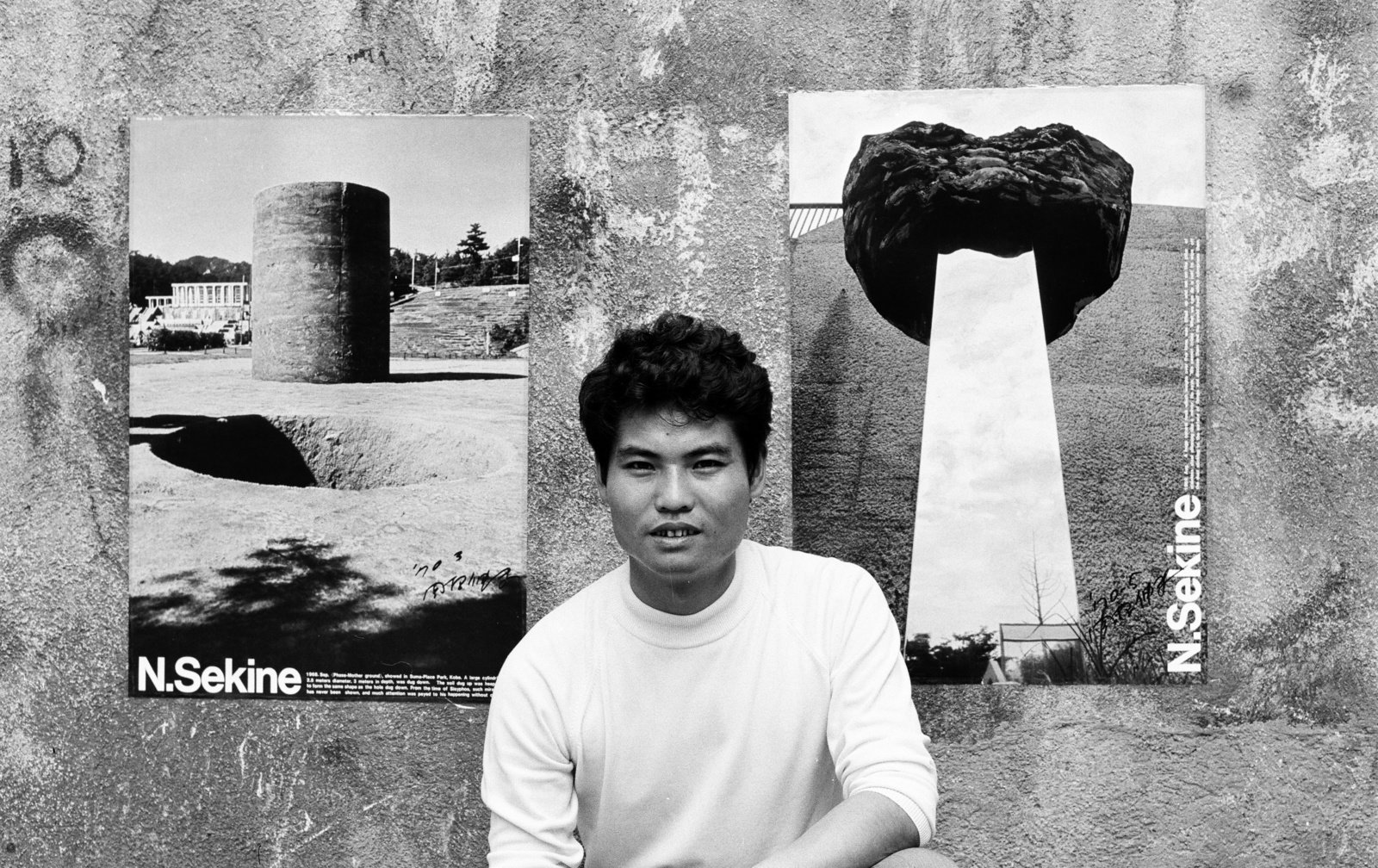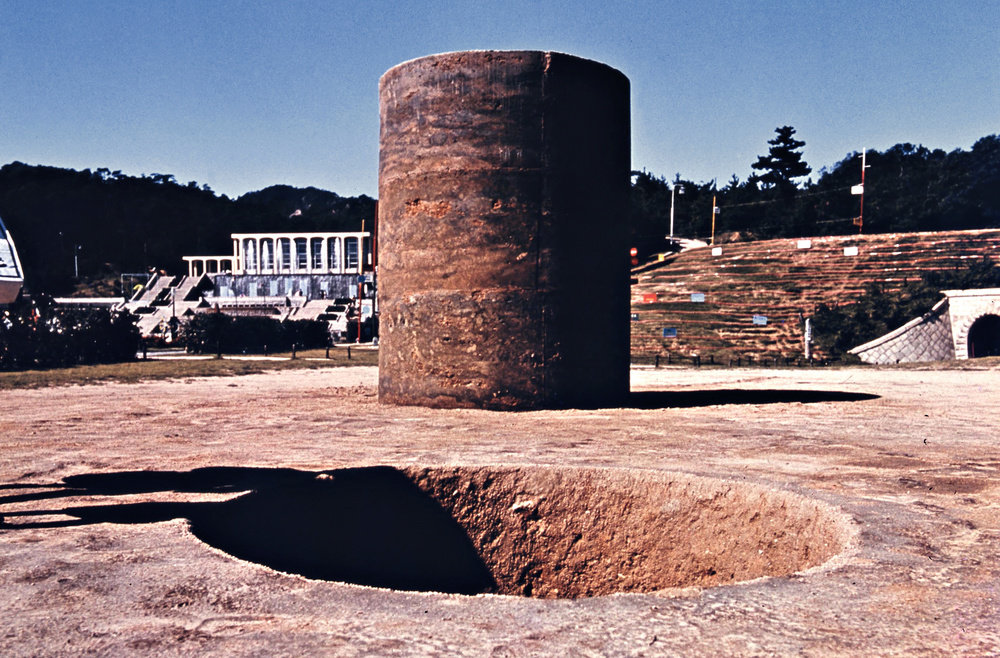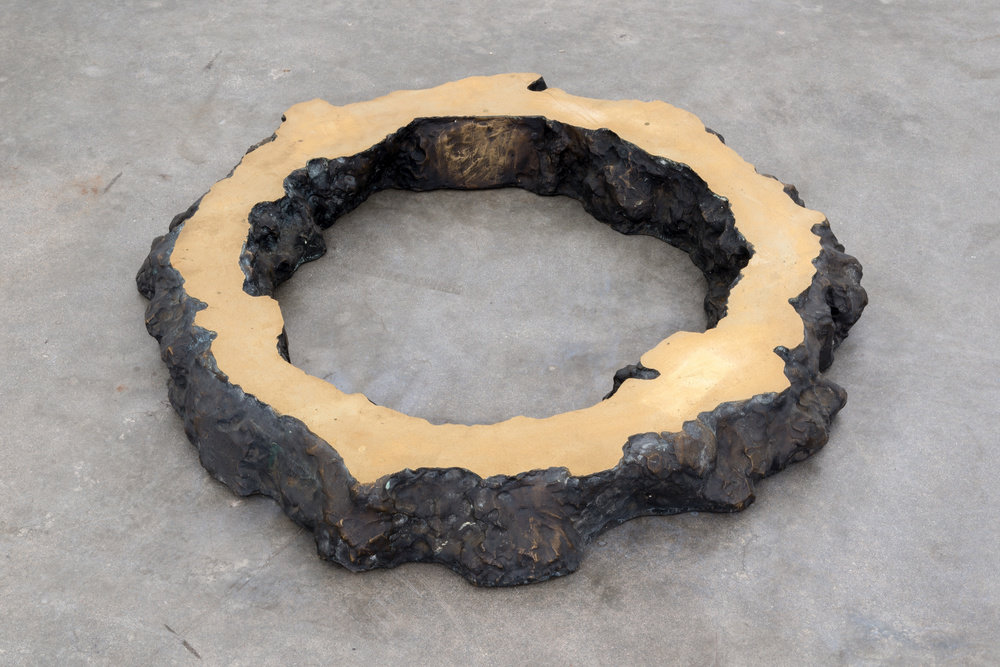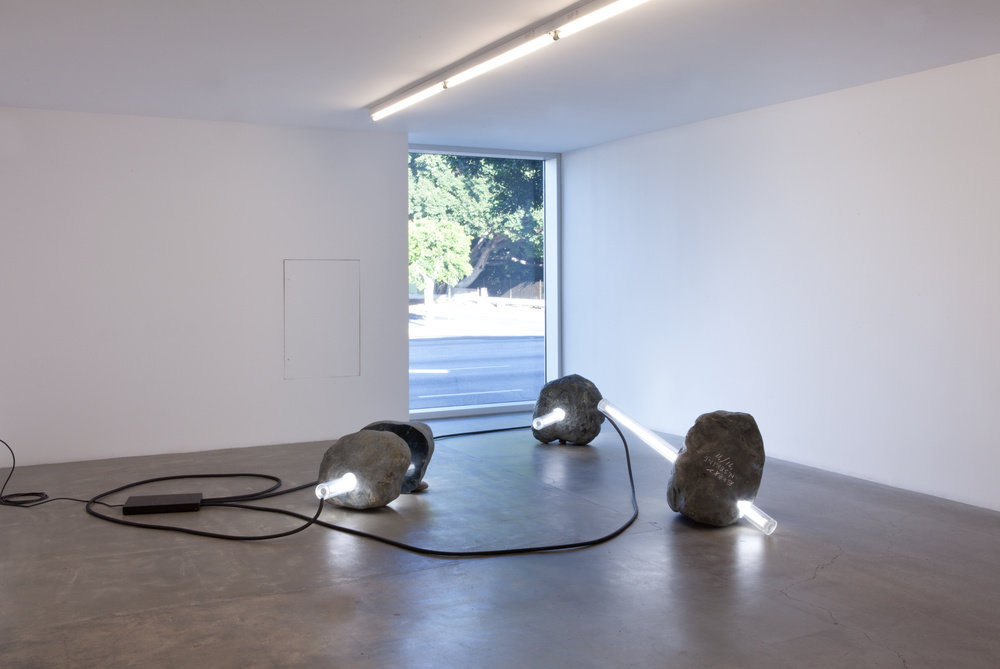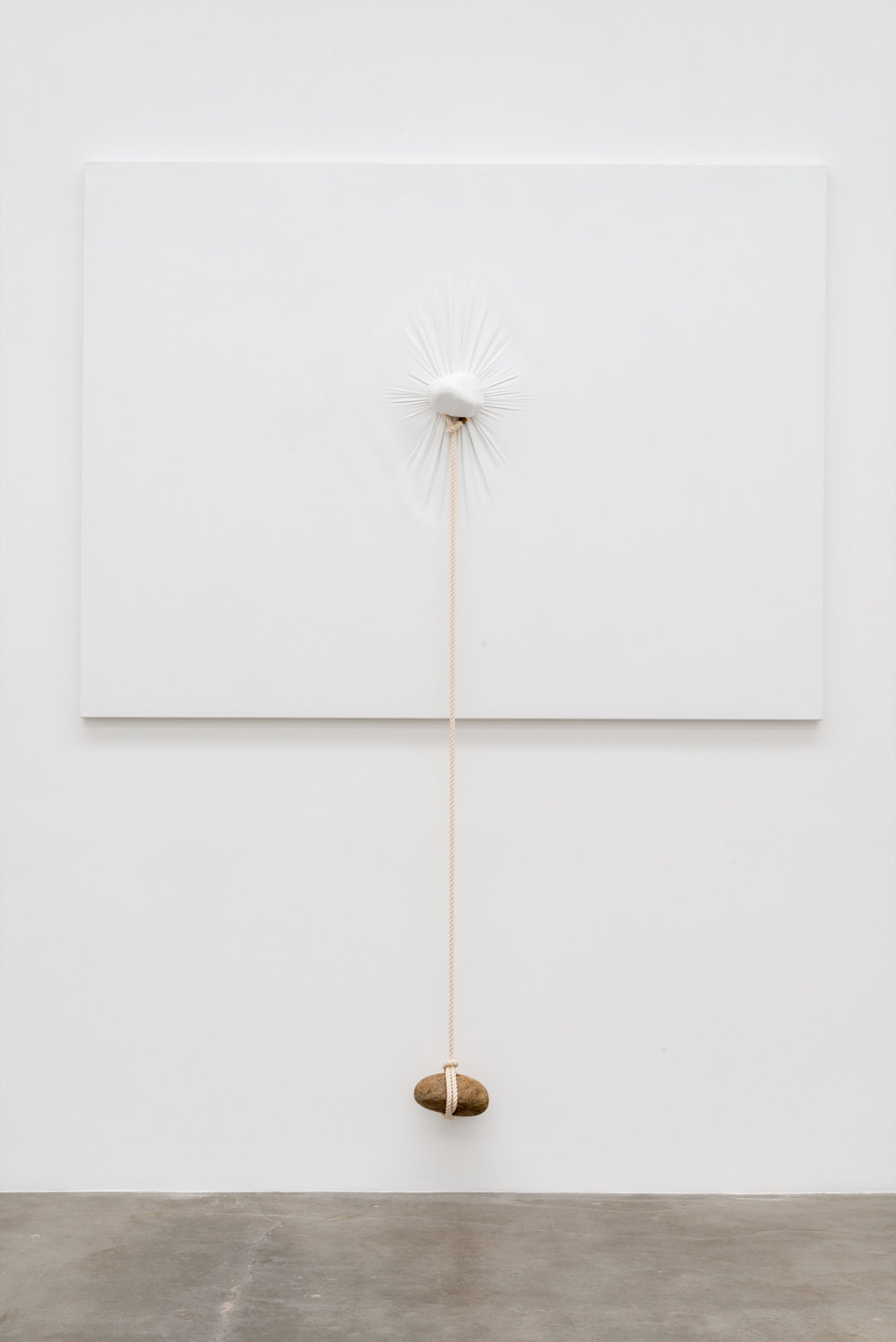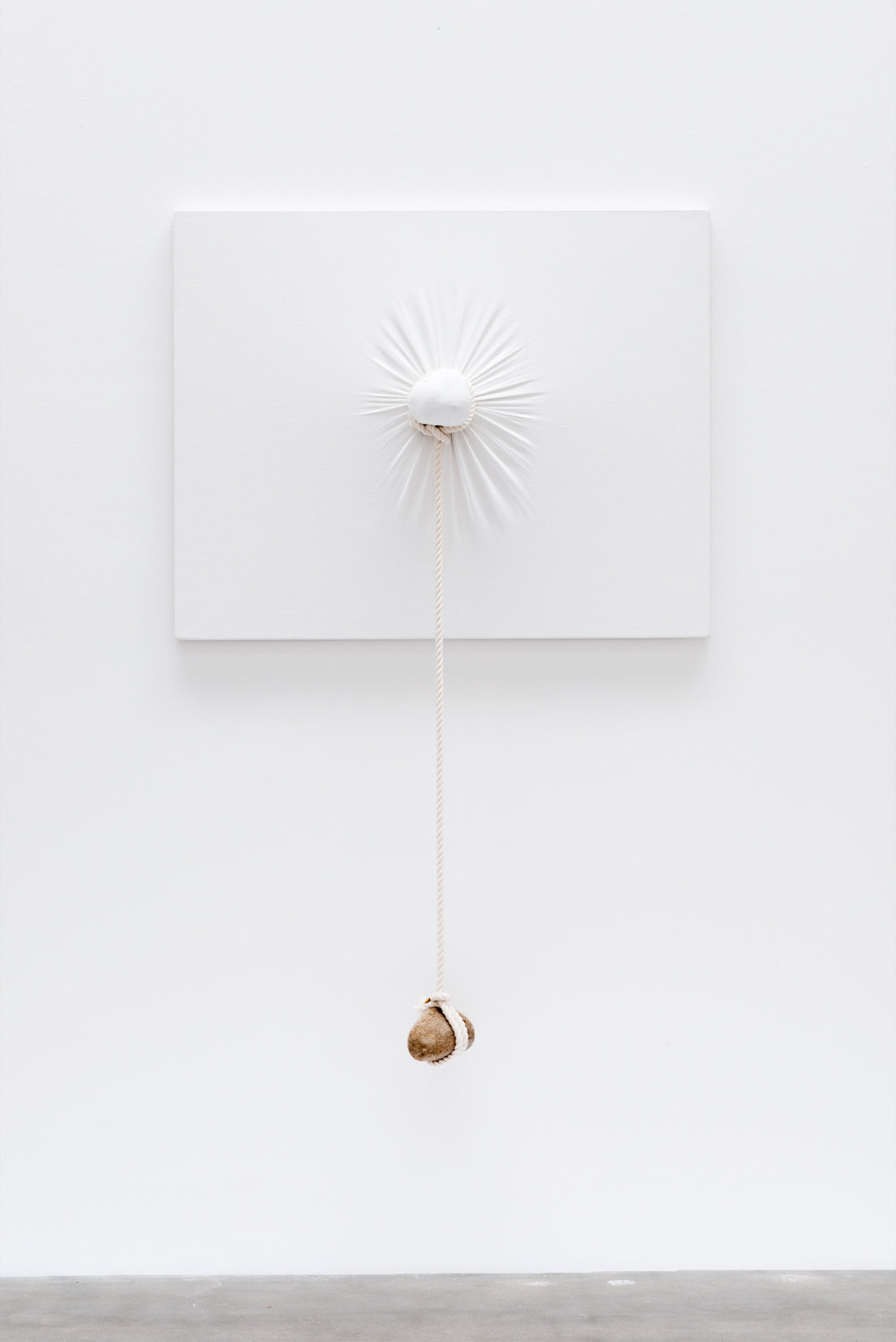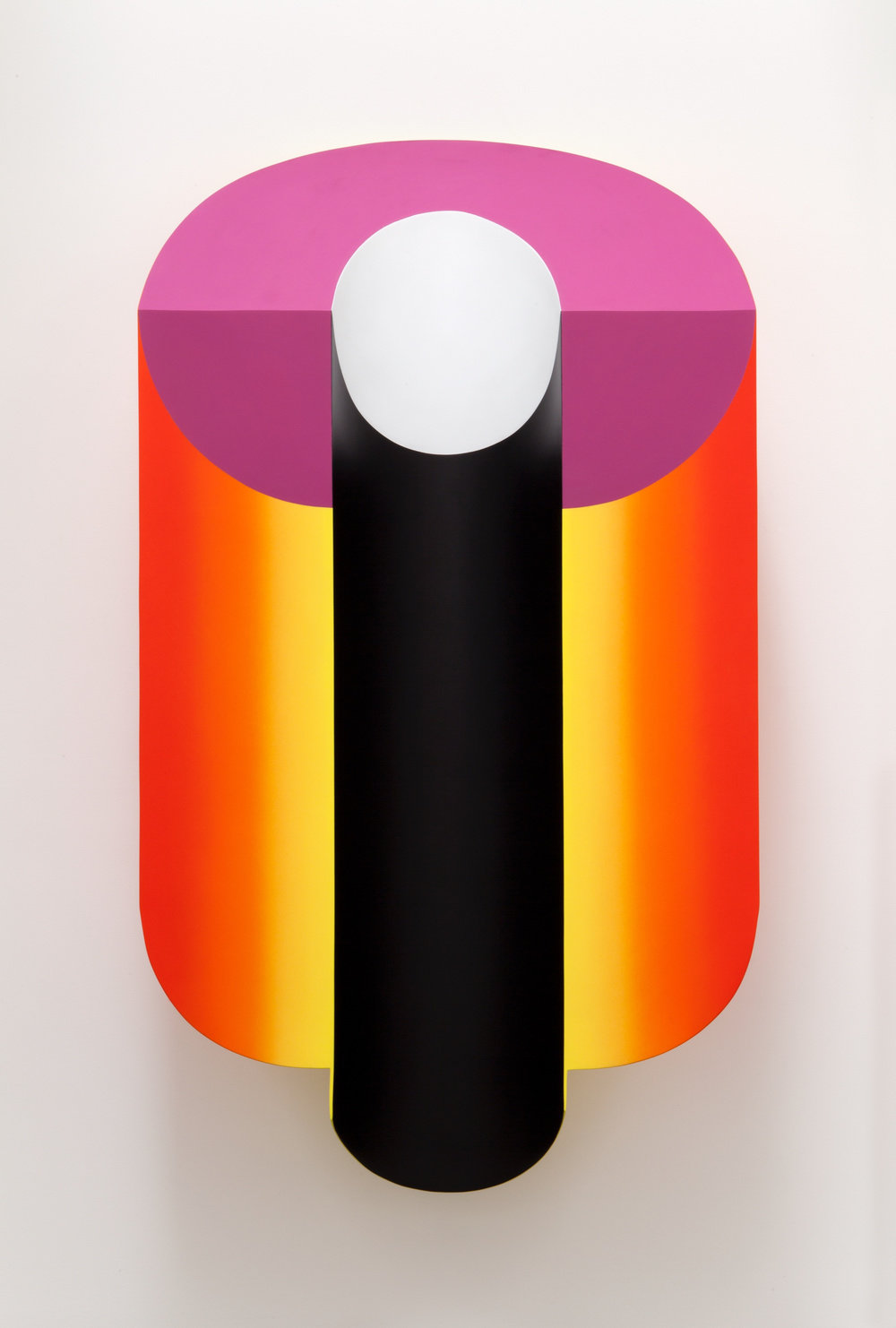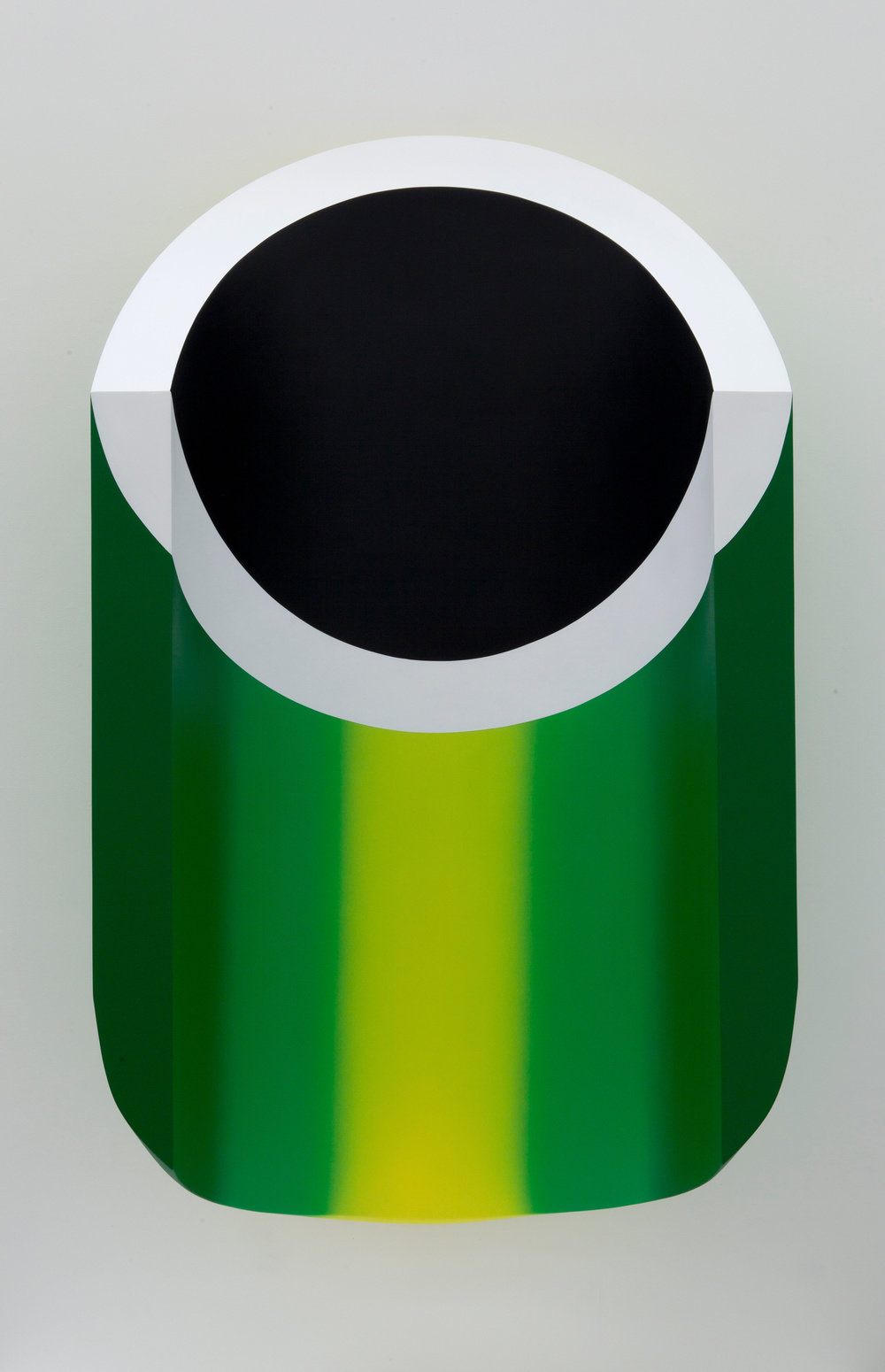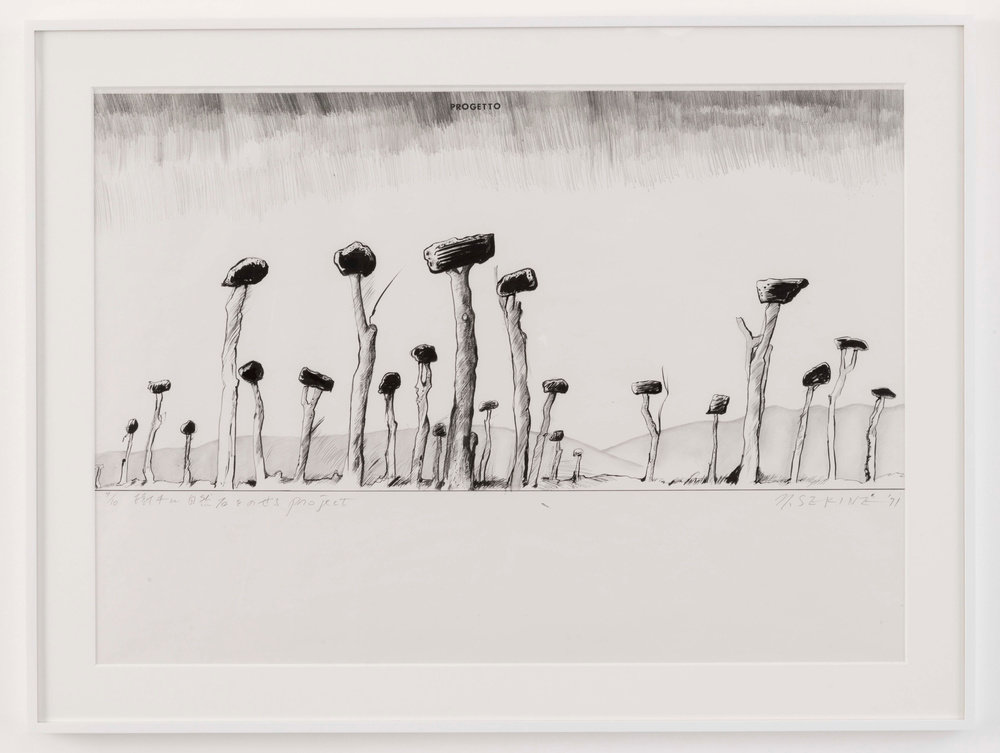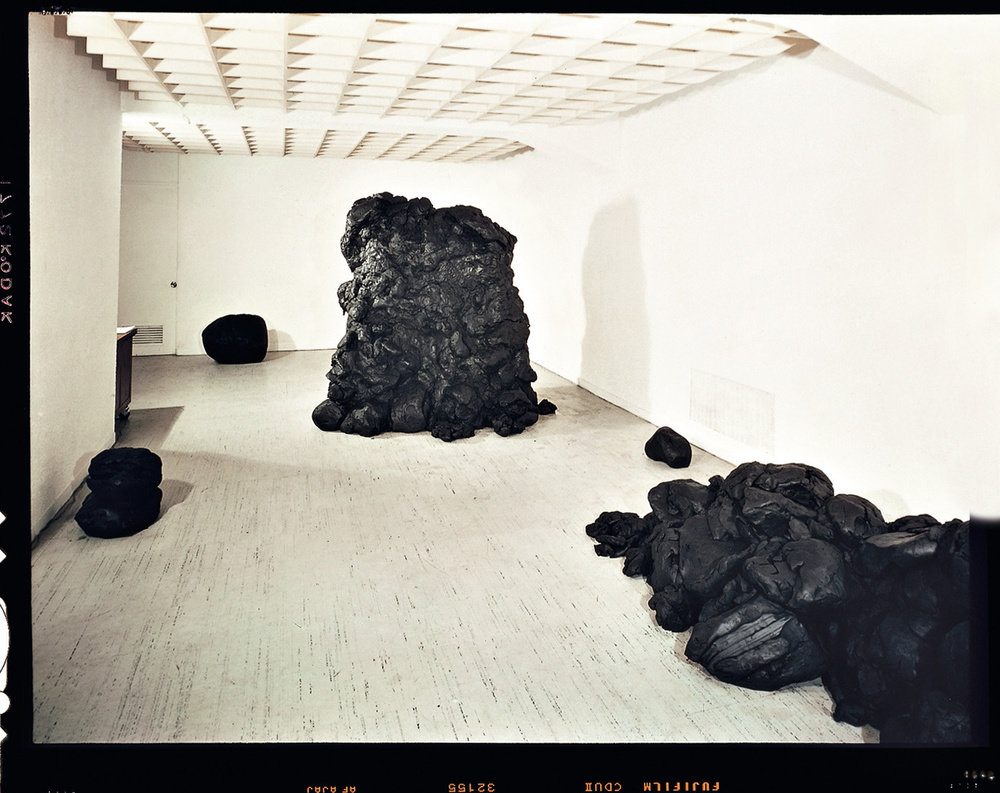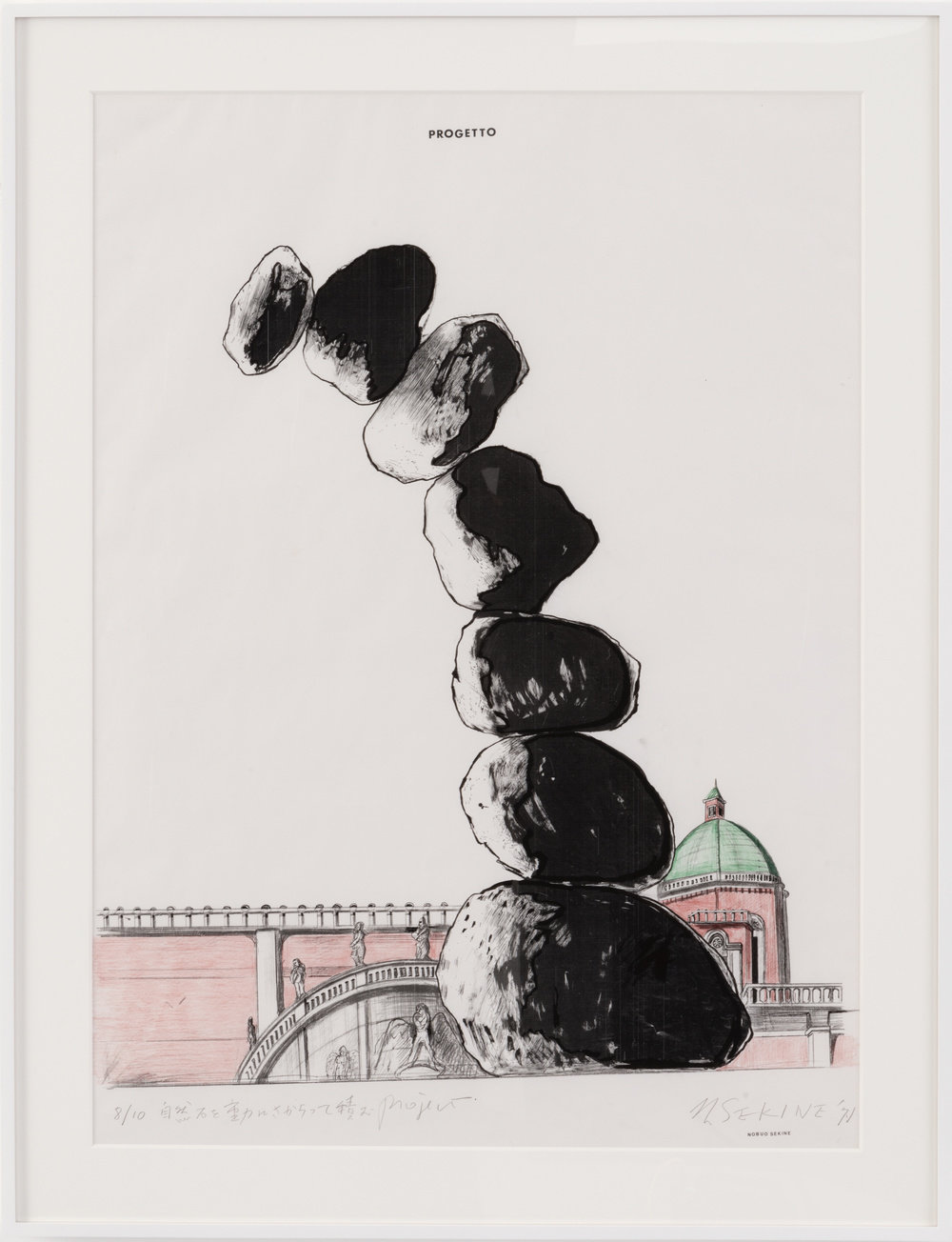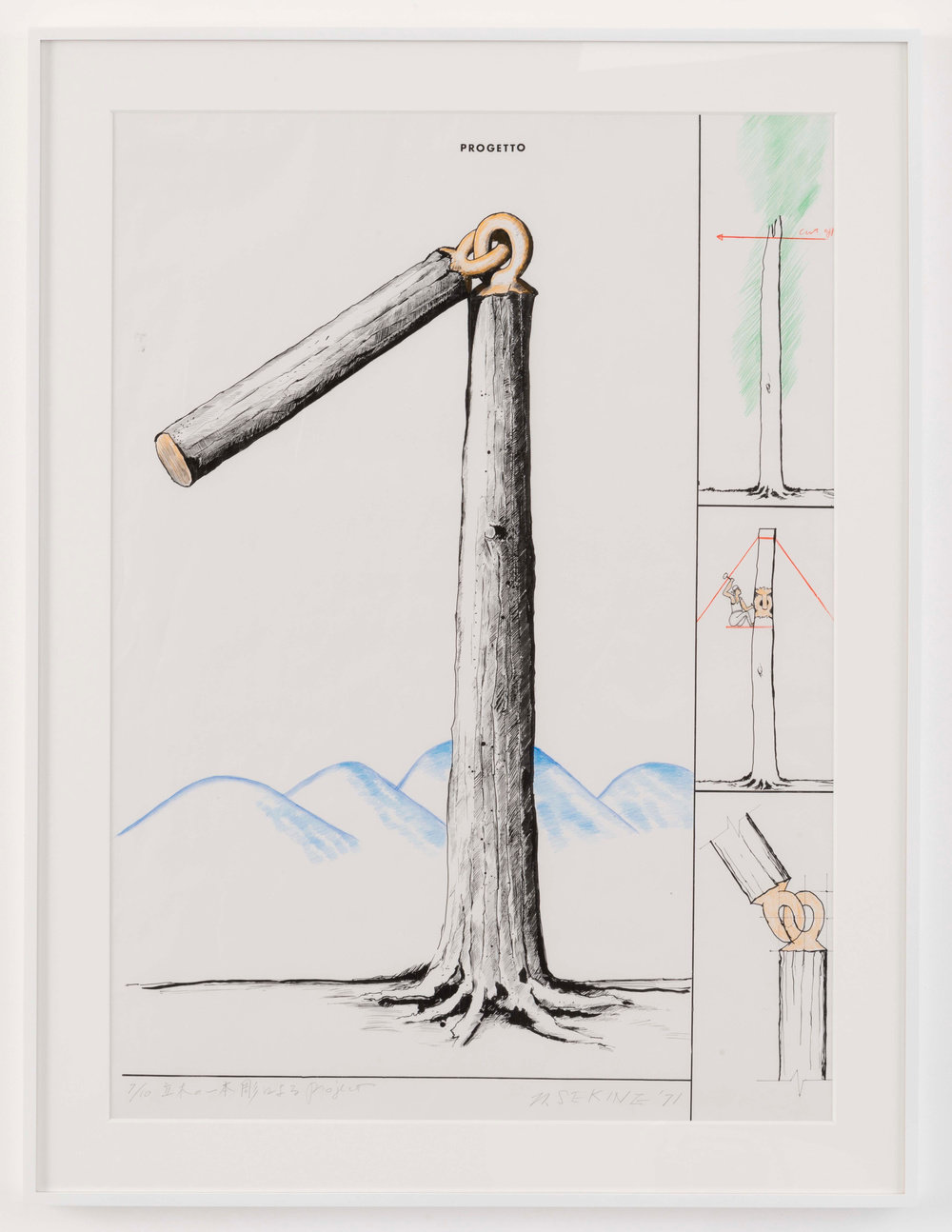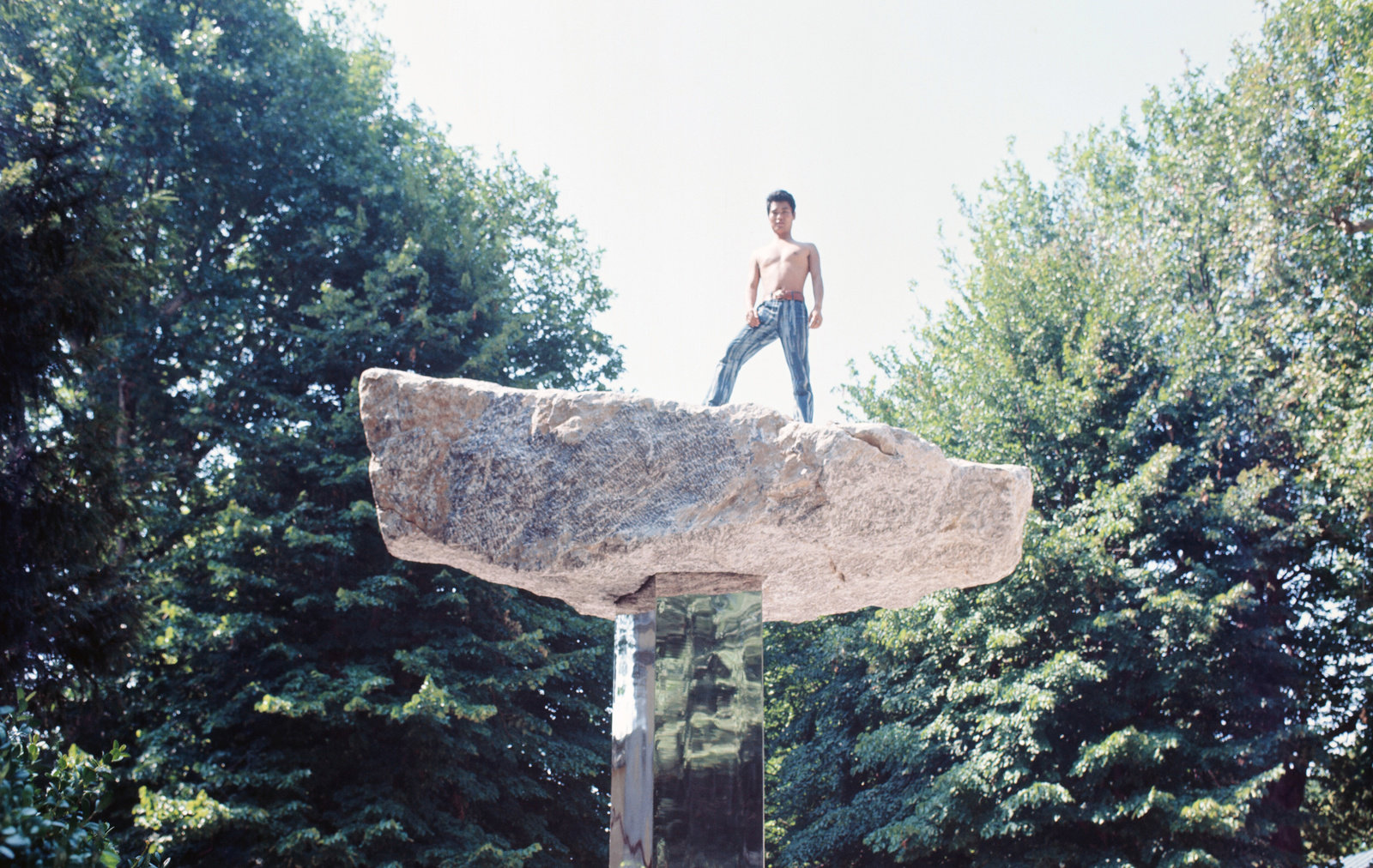

Blum & Poe Broadcasts presents a tribute to the late Nobuo Sekine, one of the central figures of the Mono-ha movement in Japan. This month marks a year since his passing. Featured here are two video segments in dedication, a rare interview with the artist and a new short narrated by curator Mika Yoshitake with previously unseen footage of the artist. This Broadcast also brings together a series of tributes written by artists ranging from the pioneering generation of Mono-ha and Dansaekhwa—colleagues and friends who knew Sekine personally—to next-generation figures who were inspired by his work early in their careers.
In the fall of 1968, a huge cylindrical cavity and protrusion appeared in the concourse of Suma Rikyū Park. It was a mysterious sight, as if a giant had pulled out a piece of the earth and placed it on the ground. A vast, cloudless blue sky spread out overhead. As I wandered around, I shuddered with the thrill that I had encountered some kind of extraordinary mythical event. I suddenly had the flash of an idea. This could be the state of being of mother earth itself. What a magnificent state of being. The more I observed it, the more I comprehended how the world is replete with eventuality. At some point the cylinders will deteriorate and flatten as though nothing had happened, eventually caving in and filling up. Thus, it would all become part of the world, washed over by the waves of everyday life and nobody aware of it. Now, what lay before me, rendered through the act of a single artist, was mother earth being mother earth. Nobuo Sekine’s Phase—Mother Earth…
— Lee Ufan
Read full tribute here: English/日本語.
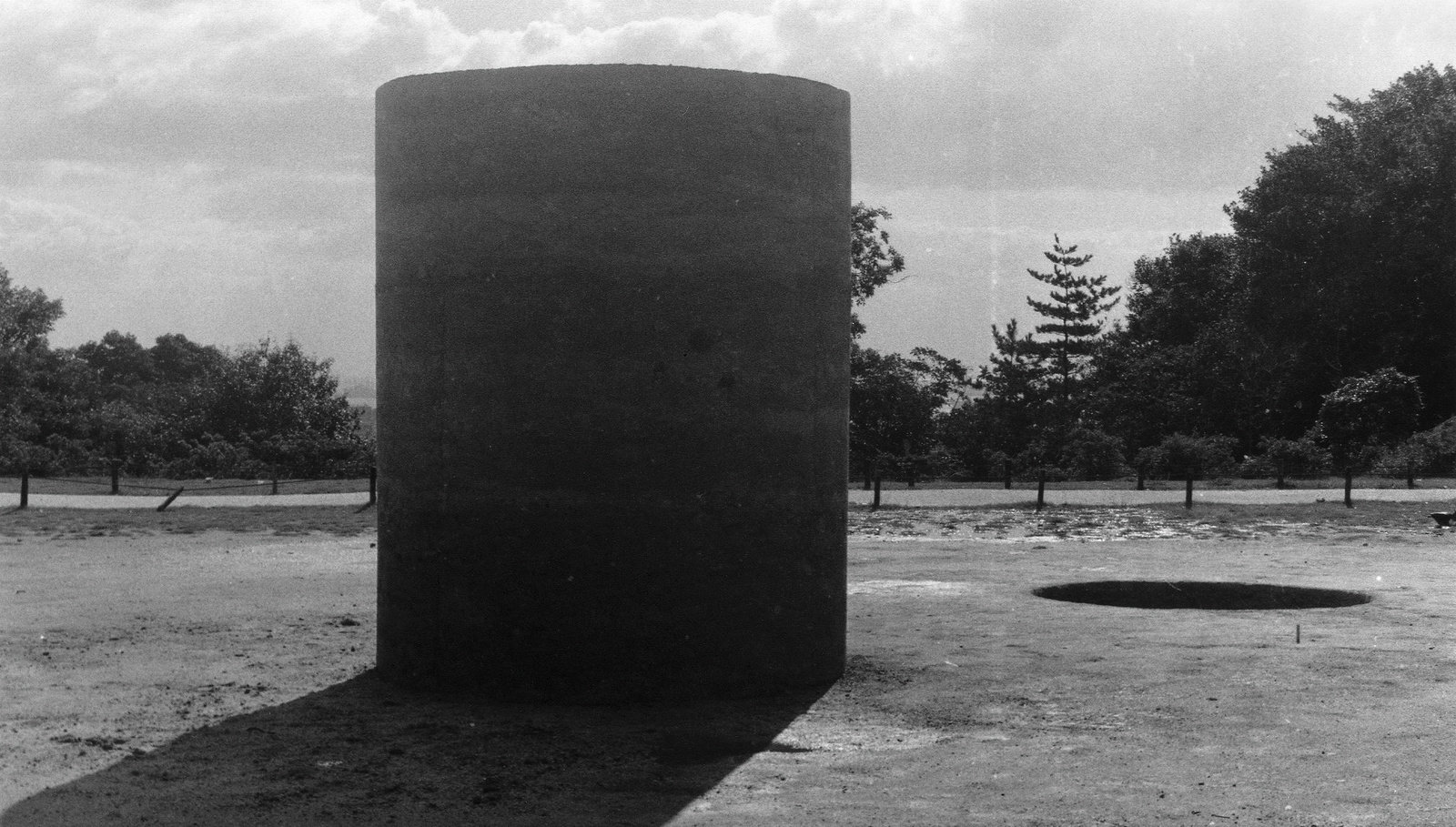

Nobuo Sekine and I had many conversations during our travels. In fact, they were more than just travels—we were blessed with opportunities to exhibit together. The first journey, needless to say, was the few weeks in 1968 when I was involved in the creation of Phase—Mother Earth at the Suma Rikyū Park in Kobe. Those days were like a training camp consisting of Sekine, myself, Katsurō Yoshida, Yoriko Kushigemachi, and Takako Uehara. Every day began with the physical labor of digging a hole and piling up the excavated earth and ended with us gathered in lively conversation at a hostel. It was a miraculous experience. The initial fog of wondering what would be born from our daily labor cleared the more we sweat through it, until finally we saw the completion of Phase—Mother Earth, a moment of explosive joy. Even now, fifty years later, I find that experience to be a shared source of relief and trust for the five of us…
— Susumu Koshimizu
Read full tribute here: English/日本語.
Nobuo Sekine can be best remembered as an artist whose works taught us about co-existence and interconnection. His works, bold and full of vivid materiality, created tensions between the heavy and the weightless, between the violent force of a boulder set atop a reflected mirrored column. Sekine began using isō or “Phase” in reference to his spatio-temporal experiments in topology in 1968, and kūsō or “Phase of Nothingness” to further emphasize systems of impermanence and an equilibrium of fullness and nothingness in 1969. Viewing space as a single malleable entity that could be manipulated into an infinite variety of structures, this idea was foundational to his breakthrough land art piece, Phase—Mother Earth (1968), initially born out of a thought experiment that visualized a “negative earth,” and eventually giving birth to the phenomena of perceptual renewal at the core of Mono-ha (School of Things)...
— Mika Yoshitake
Read full tribute here: English/日本語.
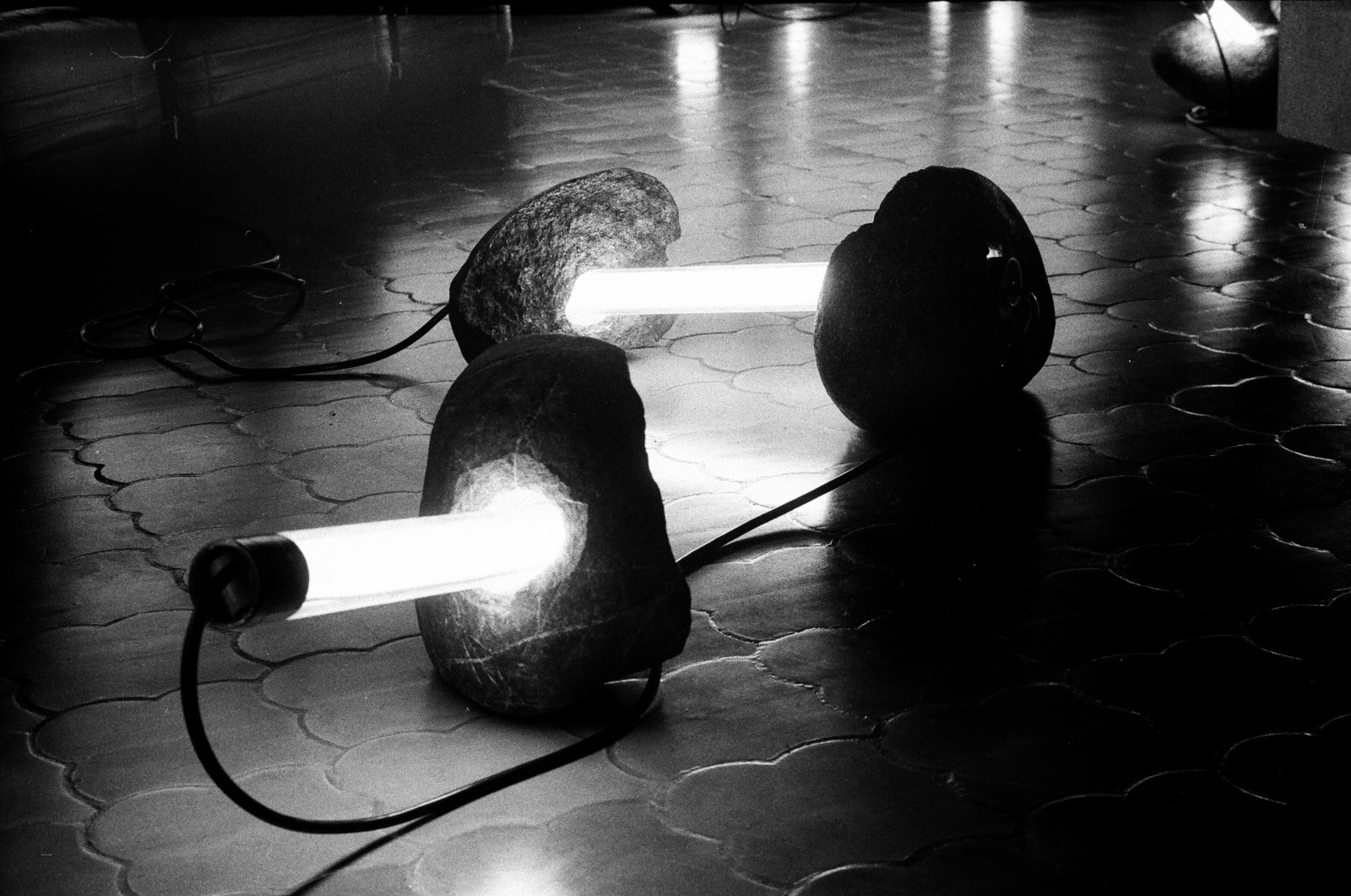

On May 13 it will be one year since Sekine passed away. Writing this tribute is bittersweet, as I still feel a great loss over his passing. But in this sadness there is also gratitude that we were able to know this representative figure of Mono-ha, and I am comforted that we will forever be connected to him through the artworks he has left behind…
— Ha Chong-hyun
Read full tribute here: English/Korean/日本語.
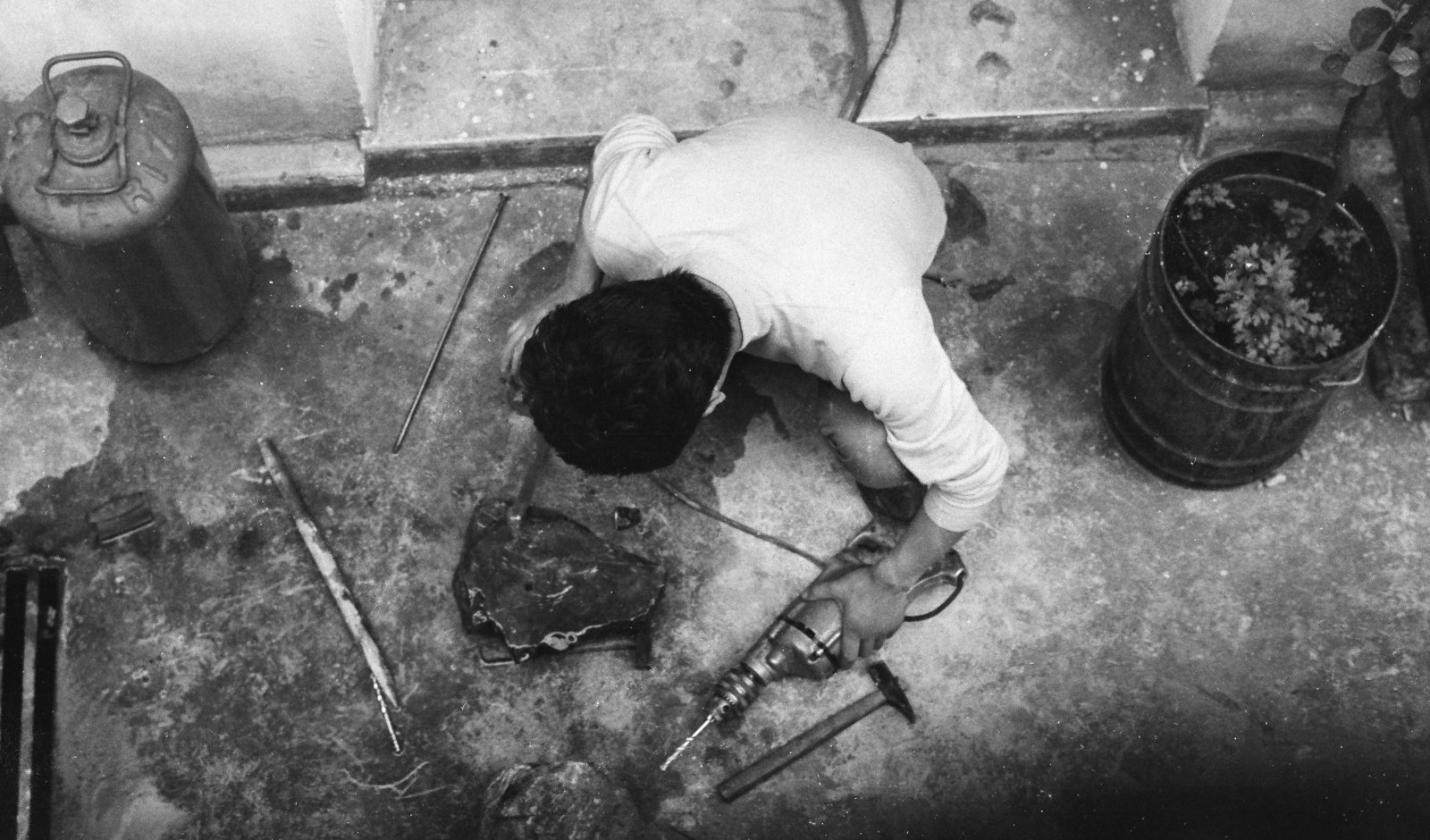

One of the artworks that had the greatest impact on me when I was a student was Nobuo Sekine’s Phase—Mother Earth (1968). What a daring and determined work, I thought. Of course, I was born in 1959, so I have only seen it in photographs, but as a confused young man who had a rebellious attitude toward the old-fashioned Japanese art university classes of the time, it made me feel the true joy of art and filled me with courage. As I began my life as an artist, I made a commitment to myself that I must strive to do something as extraordinary as Phase—Mother Earth…
— Yukinori Yanagi
Read full tribute here: English/日本語.
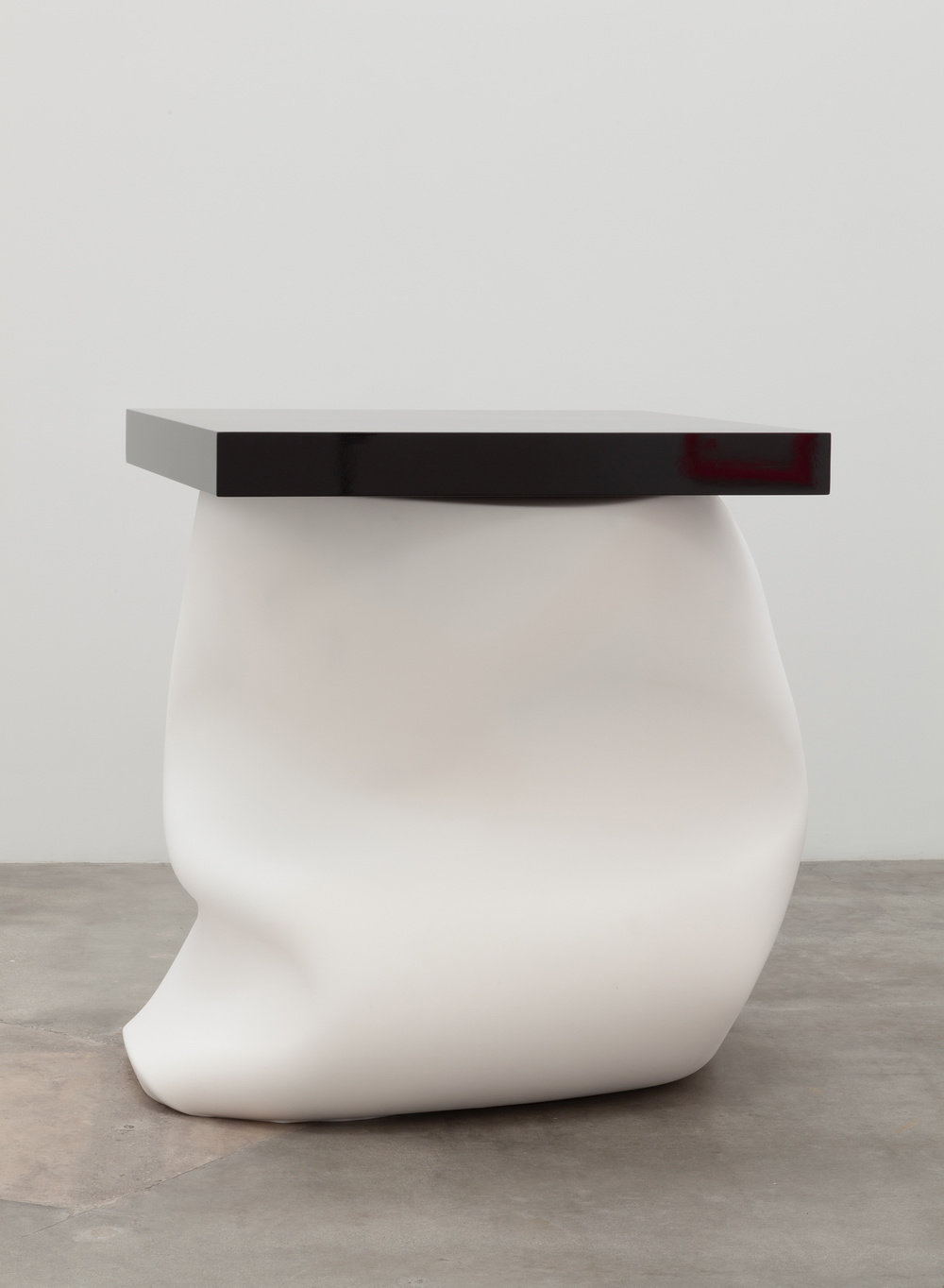
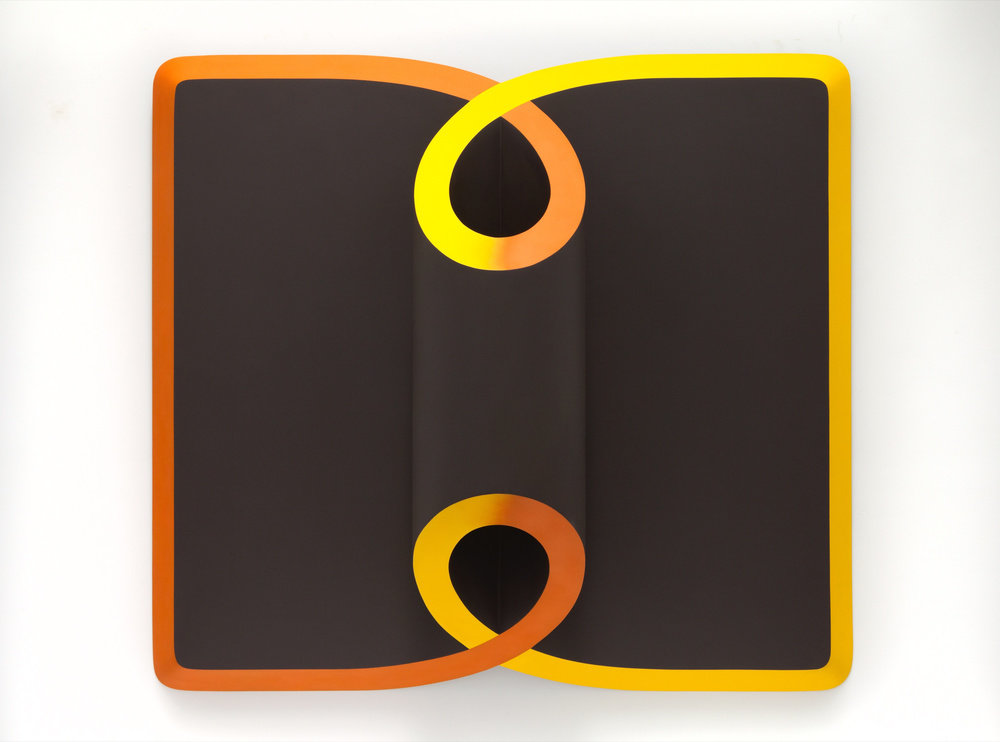


Nobuo Sekine’s Phase—Mother Earth (1968) was a fine work of great scale. Inevitably, Sekine was asked over and over how he came to make such a thing, but what matters most under any circumstances is the experience of a work in person. One could say that a large part of the impetus originated in what he learned from Yoshishige Saitō. It was the same for the rest of us young artists: Saito's ability to perceive the trends of the times was like a beacon of light in the midst of a stormy sea. Whether or not someone can see the light depends on the talent of the people around them, so in that sense Nobuo Sekine had set his sights firmly on the direction that he felt he should take…
— Kishio Suga
Read full tribute here: English/日本語.
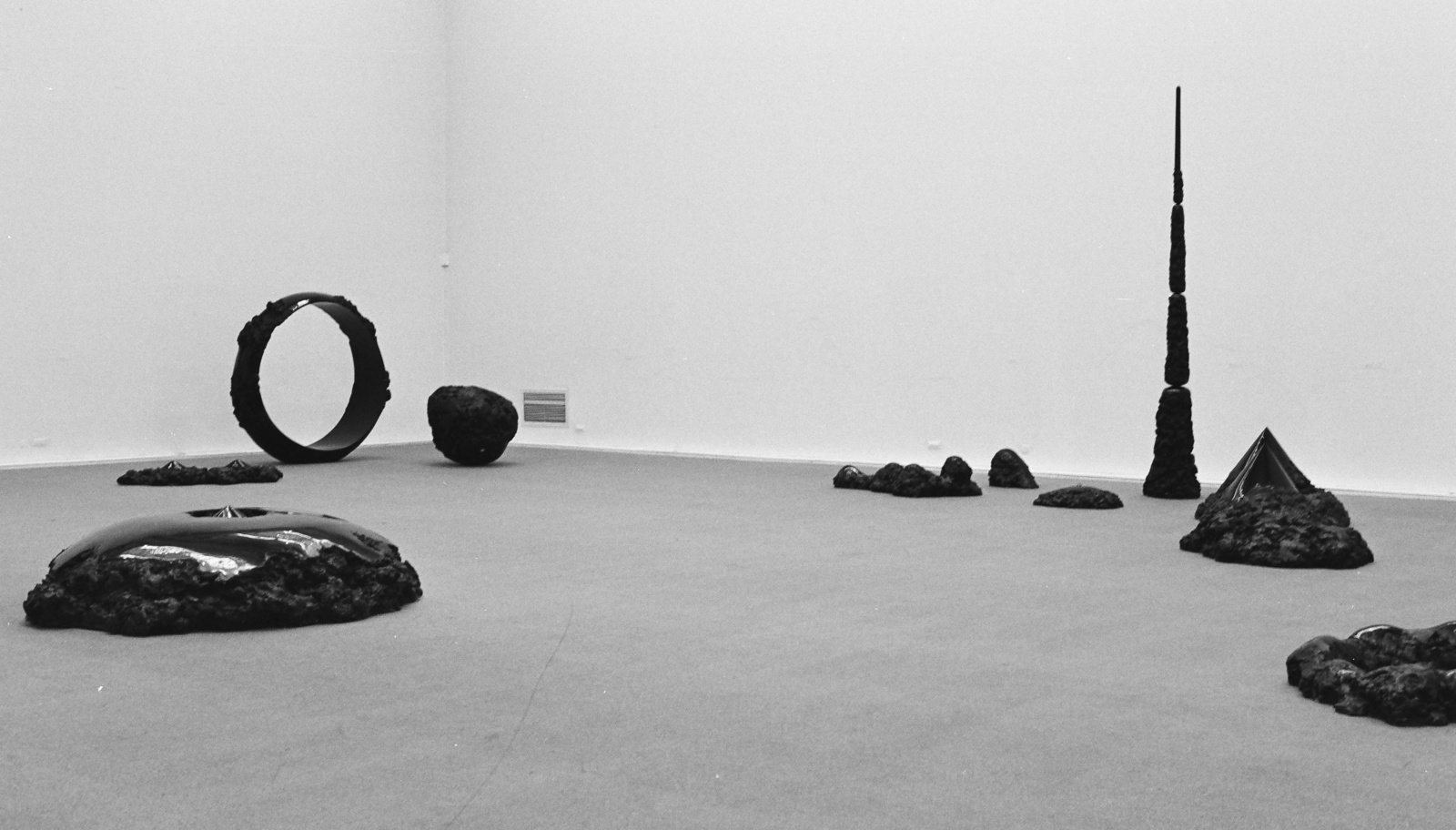

Of course, I did not see Phase of Nothingness—Oilclay in person when it was exhibited in 1969; I only saw it in a magazine in around 1977 to 1978, when I was a student. All I remember of that moment is the strange impression it made on me. In contrast with Sekine’s signature work Phase—Mother Earth, this piece gave me the impression of logical consistency, and I was deeply impressed by its blunt state of material existence… Sekine’s Phase of Nothingness—Oilclay emphasizes the materiality of the oilclay to the extent that one can no longer feel the “consideration without consideration” that is distinct to Mono-ha. Oilclay is commonly used in elementary school art classes. So, I was stunned by its sheer quantity and how it had been handled as if discarded…
— Kazumi Nakamura
Read full tribute here: English/日本語.
